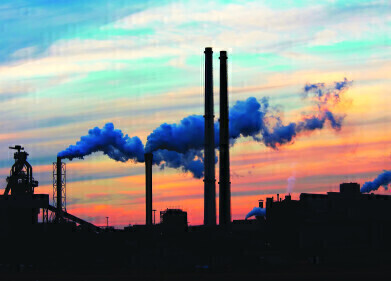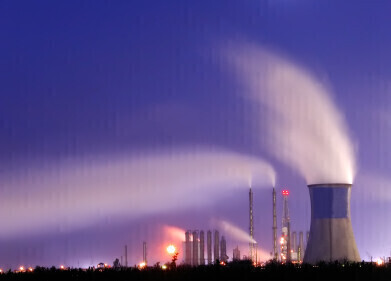Synthetic fuels
Methyl Hydrogen in Hydrocarbon Oils
Feb 20 2021
In a commercial airplane, everything that’s brought on board increases the flying weight of the craft and therefore, the amount of fuel that it uses. Luggage, passengers, cans of soda: it all adds up. That’s no small thing given the fact that a plane like the Boeing 747 burns roughly one gallon of jet fuel per second, or five gallons per mile (Source: Wise-Geek.com).
It goes without saying then, that fuel efficiency is a major concern for the airline industry, both from an economic perspective as well as a sustainability perspective. Every hour that an airplane is in the air it releases 0.25 metric tons of carbon dioxide, according to CarbonIndepedent.org.
That’s why, in 2006, the European Union passed landmark environmental legislation called the Emissions Trading Scheme (ETS) that imposed carbon emission requirements on all airlines flying into Europe. Given that aviation is a global and interconnected business, this rule has grown into a set of international standards intended to limit aircraft emissions worldwide, led by the United Nations’ International Civil Aviation Organization (ICAO). The resulting regulations are designed to cap airline carbon emissions either though airlines buying offsets or by using renewable jet fuels or blends of renewable jet fuels, standards that U.S. Environmental Protection Agency (EPA) adopted under the terms of a new rule earlier this year.
This is where ASTM International comes in, developing the fuel standards that are used to help establish criteria for low-carbon or renewable fuels.
“From an ASTM perspective, safety is critical,” says Mark Rumizen, senior technical specialist, aviation fuels with the Federal Aviation Administration. He is also a member of the subcommittee on emerging turbine fuels (D02.J0.06), part of the committee on petroleum products, liquid fuels, and lubricants (D02). “Safety must take precedence over other considerations such as emissions and economics. ASTM’s role is to evaluate all new candidate alternative jet fuels and write specifications to make sure that they’re as safe as possible and perform properly.”
Rumizen expects further regulatory steps from the FAA in 2022 to complement ICAO and EPA carbon emissions regulations. But ASTM’s role in standardizing aviation fuels extends across the industry. Here are what Rumizen believes are the three most important standards for meeting the new regulations.
1) Standard Specification for Aviation Turbine Fuel Containing Synthesized Hydrocarbons (D7566)
Low-emission aviation fuels can be made with a number of different conventional and synthetic blending components, including algae and plant material. Jet engine emissions requirements for things like NOx, CO, and unburned hydrocarbons have been in place for years, but the new EPA rule adds greenhouse gases to the mix. Fuels based on D7566 that are made from synthetic or renewable sources will significantly reduce net greenhouse gas emissions, with the CO2 emitted from the engines offset by the CO2 consumed by the renewable feedstock used to make the fuel. This specification defines the minimum property requirements for aviation turbine fuel that contain synthesized hydrocarbons and lists acceptable additives for use in civil operated engines and aircraft.
2) Standard Practice for Evaluation of New Aviation Turbine Fuels and Fuel Additives (D4054)
This standard applies to the fuel-evaluation process and is a guideline for what data an alternative jet fuel producer needs to generate in order to get a specification written for their fuel. It is a very rigorous and demanding process by design, which is necessary to ensure operational safety and that these fuels are safe to use in existing aircraft.
3) Standard Specification for Aviation Turbine Fuels (D1655)
While not focused on low-carbon fuels exclusively, this specification defines the minimum requirements for Jet A and Jet A-1 aviation turbine fuel made from petroleum sources and lists acceptable additives for use in engines and aircraft. Although developed for civil applications, this standard has also been adopted for military aircraft and helps purchasing agencies formulate their own specifications when purchasing aviation turbine fuel in large batches.
“Looking ahead, how much of these [alternative] fuels the industry uses is going to depend on supply, as right now there isn’t much available,” Rumizen says. “There is political will for more producers to start making these fuels, but they’re being hindered by economic realities and the fact that they cost more to produce. Government subsidies and policies to promote the production of these fuels would certainly speed adoption.”
Digital Edition
PIN 26.1 Feb/Mar 2025
March 2025
Analytical Instrumentation - Elemental Analysis for Quality and Process Control at Refineries, for Lubricants and Wear Metals in Engine Oils - Synthetic Lubricants: New Developments - Scaling...
View all digital editions
Events
Apr 08 2025 Birmingham, UK
Apr 08 2025 Kielce, Poland
Apr 08 2025 Ravenna, Italy
Apr 08 2025 Southampton, UK
Apr 08 2025 London, UK



















